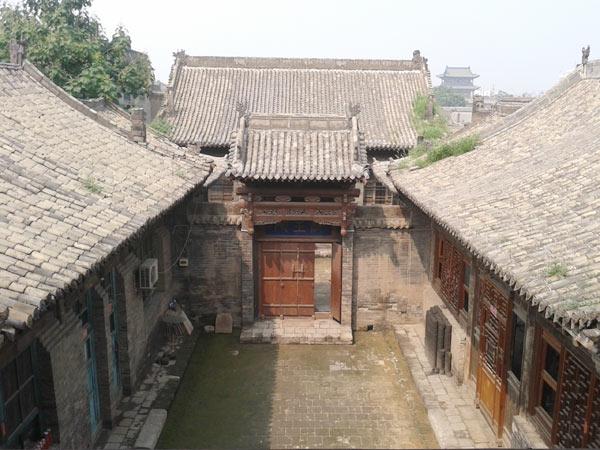 |
| Ji Hongfu's house, a 664-year-old courtyard in Shanxi province's ancient Pingyao town, has been owned by 23 generations of his family. Sun Yuanqing / China Daily |
An innovative project fusing the private, government and NGO sectors aims to go beyond restoring ancient Pingyao's major structures to include its residences, as they contain the town's most important heritage - its people.
Ji Hongfu was born with a priceless asset - his house. It has since become the 39-year-old's greatest liability.
Twenty-three generations of Ji's family have dwelled in the 664-year-old courtyard in Shanxi province's ancient Pingyao town. The structure survived the family fortune's ups and downs over the centuries. A history of clan prosperity is evident in the spacious layout, exquisitely sculpted windows and family motto inscribed on the gate.
But this past glory is also faded glory. While the exterior remains resplendent, the interior is crumbling at an exponential pace, Ji says.
The erosion-resistant pillars are eroding. The roof leaks. The walls are disintegrating.
"It's not easy to live in," Ji says. "But we don't have the money or expertise to fix it."
Ji is among hundreds of residents who aspire to maintain their properties in the UNESCO World Heritage site that private investment has propelled to rank among the country's top tourist destinations.
While Pingyao's major structures have largely been restored and protected, private investment hasn't helped residences like Ji's.
That's where a new architectural heritage-protection model unlike any in China comes in.
Its backbone is the partnership of the private sector, government and nonprofit Global Heritage Fund.
"Pingyao's real gems are its ancient residences," the city's urban and rural planning bureau director Ji Taiping explains.
"But they've been essentially neglected. We'll probably lose them forever if we don't act now."

 Luxury-cars parade held in Dubai
Luxury-cars parade held in Dubai Special forces take tough training sessions
Special forces take tough training sessions Fire guts 22-storey Nigeria commercial building in Lagos
Fire guts 22-storey Nigeria commercial building in Lagos A girl takes care of paralyzed father for 10 years
A girl takes care of paralyzed father for 10 years A record of Beijing air quality change
A record of Beijing air quality change In pictures: explosions occur in Taiyuan
In pictures: explosions occur in Taiyuan Hello! Horror Halloween Celebration!
Hello! Horror Halloween Celebration!  The catwalk to the world of fashion
The catwalk to the world of fashion  Cruise trip to Taiwan
Cruise trip to Taiwan  Maritime counter-terrorism drill
Maritime counter-terrorism drill Loyal dog waits for master for six months
Loyal dog waits for master for six months Oriental education or western education?
Oriental education or western education? China in autumn: Kingdom of red and golden
China in autumn: Kingdom of red and golden National Geographic Traveler Photo Contest
National Geographic Traveler Photo Contest Chinese screen goddesses from Beijing Film Academy
Chinese screen goddesses from Beijing Film Academy Day|Week|Month